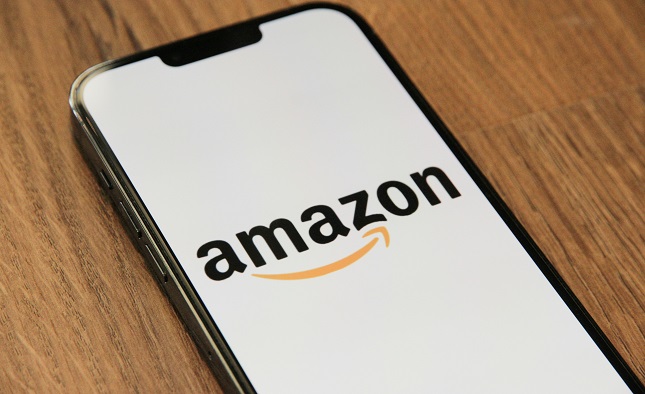I have a little secret I want to share with you, something that separates the casual Amazon sellers from the heavy-hitters. It’s not a magic button or some complex hack. It’s simply niche market analysis. If you’re serious about selling on Amazon, this isn’t just homework; it’s your treasure map. Trust me, I’ve seen too many brilliant sellers fail because they jumped into a massive market, like “water bottles,” and got instantly crushed by the competition.
The goal isn’t to find the next big trend, which is often too late anyway. The real goal is to find a small, specific corner of the market—a micro-niche—where customer demand is high, the competition is manageable, and the profit potential is strong. Imagine selling “stainless steel water bottles with a paracord handle for hikers” instead of just “water bottles.” See the difference? This strategic planning is crucial, but if you feel overwhelmed by the process and need data-driven help, know that there are experienced ecommerce service providers available to assist with everything from product sourcing to launch. That focused approach is where the real money is made, and the only way to find it is through deep, smart niche analysis.
Key Factors for Niche Selection
So, what exactly makes a niche market a winner? It’s a bit like assembling a winning sports team; you need players with specific strengths. We’re looking for a combination of market dynamics that signal both demand and a relatively easy entry point for a new private label product. You don’t want to fight a losing battle against the big brands right out of the gate.
A profitable Amazon niche generally exhibits the following characteristics.
High Demand. Customers are actively searching for and buying products in the niche. I always look for consistent sales volume. A minimum of 750 monthly units sold is a good starting point for a high-demand product, along with favorable keyword search volume. I aim for products where people are already spending their money, not ones I have to convince them to buy.
Low Competition. The market should not be oversaturated. I check for signs of low competition, which include fewer sellers offering near-identical products. Competitor listings with relatively low review counts (under a few hundred) are a great sign. We want a market where we can actually rank on the first page without spending a fortune on ads.
Strong Profit Margin. The product’s selling price must allow for a healthy profit after accounting for all costs. This means calculating the Cost of Goods Sold (COGS), FBA fees, shipping, advertising, storage, and returns. A target of 15-20% net profit margin is a realistic goal. If you can’t make money, why are you doing this?
Good Price Point. A common “sweet spot” is often cited as $20−$50. This range balances affordable customer acquisition with sufficient margin. Products under $15 can be tricky because the Amazon fees tend to eat up all the profit. Higher prices can mean fewer sales, but a bigger profit per unit.
Low Seasonality. I strongly prefer “Evergreen” products with consistent, year-round demand. You should generally avoid items with major seasonal sales fluctuations (e.g., holiday-specific items), as they complicate inventory management and disrupt stable revenue. Steady cash flow is much less stressful than a sales rollercoaster!
Differentiation Potential. There must be opportunities to improve on existing products. This could mean better features, improved quality, product bundling, specific sub-niche targeting (like “eco-friendly” or “for seniors”), or addressing common customer complaints. This is your secret sauce—how you plan to be better than everyone else.
Manageable Logistics. The product should be relatively small and lightweight. This is key to keeping shipping and FBA storage costs down. Avoid products that are fragile, oversized, or have complex legal/compliance concerns. Smaller, simpler items mean fewer headaches and lower starting costs.
Market Research Strategies: Finding the Gold
Finding a profitable niche isn’t about guessing; it’s about following the data. The good news is that Amazon gives us a lot of clues, and when combined with smart external tools, we can pinpoint those golden opportunities. Think of yourself as a detective, not just a shopper.
Here are the strategies I use, combining Amazon’s own features, external tools, and general web research.
Amazon Research Tools. I always start with dedicated software. Use tools like Jungle Scout (Opportunity Finder) or Helium 10 (Black Box) to filter the Amazon catalog for products that meet your criteria. You can set filters for high monthly sales, low competition score, and a specific price range. Amazon’s own Product Opportunity Explorer provides similar data directly within Seller Central. These tools are worth the investment; they save you hundreds of hours of manual work.
Analyze Bestsellers and Movers. I review the Amazon Best Sellers and Movers & Shakers lists to get a snapshot of current demand and trending products. This is often a starting point for broad categories. Don’t sell the exact bestseller, but look at what’s selling well and try to find a sub-niche within that category.
Competitor and Review Analysis. This is crucial. I read customer reviews on existing listings, especially the 3-star and 4-star reviews. These reviews are gold because they uncover customer pain points, unmet needs, or product flaws that you can solve with a differentiated product. I also analyze top competitor listings to understand their titles, keywords, and pricing strategies. Customers literally tell you how to build a better product; listen to them!
Keyword Research. I use research tools and Amazon’s search bar auto-complete to find long-tail keywords with healthy search volume but fewer competing listings. Low search volume keywords can point directly to untapped micro-niches. Think “dog leash for large, pulling dogs” instead of just “dog leash.”
External Trend Analysis. I use Google Trends to track the long-term search popularity of keywords. This helps me determine if a niche is growing, declining, or stable, which confirms low seasonality. If a trend line is crashing, I run away. If it’s stable or slowly climbing, I’ve found a good prospect.
Social Media & Forums. I explore platforms like Reddit, Facebook groups, and Instagram/TikTok hashtags related to my niche ideas. I observe what consumers are actively discussing, what products they love, and what problems they are seeking solutions for. People on Reddit often complain about products, and those complaints are your product-improvement ideas.
Micro-Niche Hunting
Finding a niche is good, but finding a micro-niche is great. This is the difference between selling “kitchen gadgets” and selling “reusable, collapsible food storage for meal prepping busy professionals.” It’s specific, targeted, and immediately less competitive.
The real art here is in the drill-down process. I start broad, then narrow my focus based on the data I find. For example, let’s take the broad niche of “Pet Supplies.”
The first step is the Broad Niche, which is Pet Supplies. This is way too competitive, with way too many products.
The second step is the Narrow Niche, like Dog Training Aids. This is better, but still has high competition.
The third step is the Micro-Niche, such as Remote-controlled, water-resistant bark collars for small dogs. This is the sweet spot. It’s very specific, easy to target with ads, and allows me to focus my product features.
This process isn’t just about finding fewer competitors. It’s about speaking directly to a specific, passionate audience who are happy to pay a premium for a product that truly solves their unique problem. When you speak to everyone, you speak to no one.
The Role of Competition Analysis
I cannot stress this enough: your competitors are your free education. Most new sellers look at a competitor’s success and feel discouraged. I look at it and see a blueprint for success and a list of mistakes to avoid.
Here’s how I dissect the competition:
Review Count is a Barrier. If the top 10 sellers all have thousands of reviews, I generally move on. It’s too expensive and time-consuming to catch up. I look for niches where the top sellers have less than 500 reviews. That’s a reasonable number to compete with.
Listing Quality Shows Vulnerability. Are their photos boring? Is the title keyword-stuffed and confusing? Is their A+ Content non-existent? Poor listings signal a lazy or unsophisticated competitor, making it easier for me to outshine them simply by having a professional listing.
Customer Complaints are Opportunities (The 3-Star Sweet Spot). The 3-star and 4-star reviews are pure gold. They aren’t angry rants, but honest critiques. Phrases like “I loved it, but the zipper broke” or “Great product, if only it came with a travel bag” tell you exactly how to improve the product for your launch. This is your differentiation potential handed to you on a silver platter!
Pricing Strategy Reveals Market Health. I look at their pricing history using a tool like Keepa. Are they constantly dropping the price? That’s a sign of a price war, which is a big red flag. A stable price shows a healthy market where sellers are focused on quality, not just cutting corners.
Top Niches for Amazon FBA Sellers in 2025 (The Current Trends)
While we should always validate with our own research, paying attention to macro trends can give us a fantastic starting point. The current consumer shift toward conscious spending, personal wellness, and smart living has opened up some great doors.
- Skincare and self-care with organic and wellness attributes. People want to feel good, and they are willing to pay for products they trust are safe and effective. Think organic essential oils, reusable makeup remover pads, or niche skincare tools.
- Pet supplies including interactive toys and eco-friendly products. The “pet parent” economy is huge. People treat their pets like family. Interactive, smart pet toys and sustainable, biodegradable waste bags or beds are thriving.
- Gaming setup accessories like ergonomic chairs and keyboards. The gaming and remote work crossover is strong. Anything that improves comfort and performance for long periods of sitting—specialized mouse pads, lumbar support, or custom keycaps—is selling fast.
- Home decor, especially eco-conscious and minimalist designs. Consumers are nesting, focusing on home upgrades that are both aesthetically pleasing and sustainable. Reusable grocery bags, bamboo kitchen tools, or minimalist wall art are excellent examples.
- Baby products such as BPA-free toys and smart monitors. Parents are cautious and prioritize safety and technology. High-quality, non-toxic feeding sets or Wi-Fi-enabled monitoring gadgets are consistently in demand.
- Smart home gadgets combining convenience and giftability. Small, affordable smart home accessories that solve a simple problem—like smart plugs, LED strip lights, or unique charging stations—are great, easy-to-ship products with year-round appeal.
Final Thoughts
For Amazon sellers, niche market analysis isn’t optional—it’s survival. A profitable niche means fewer headaches, less competition, and a stronger brand identity. Think small, sell smart, and dominate your corner of Amazon before scaling bigger.












































